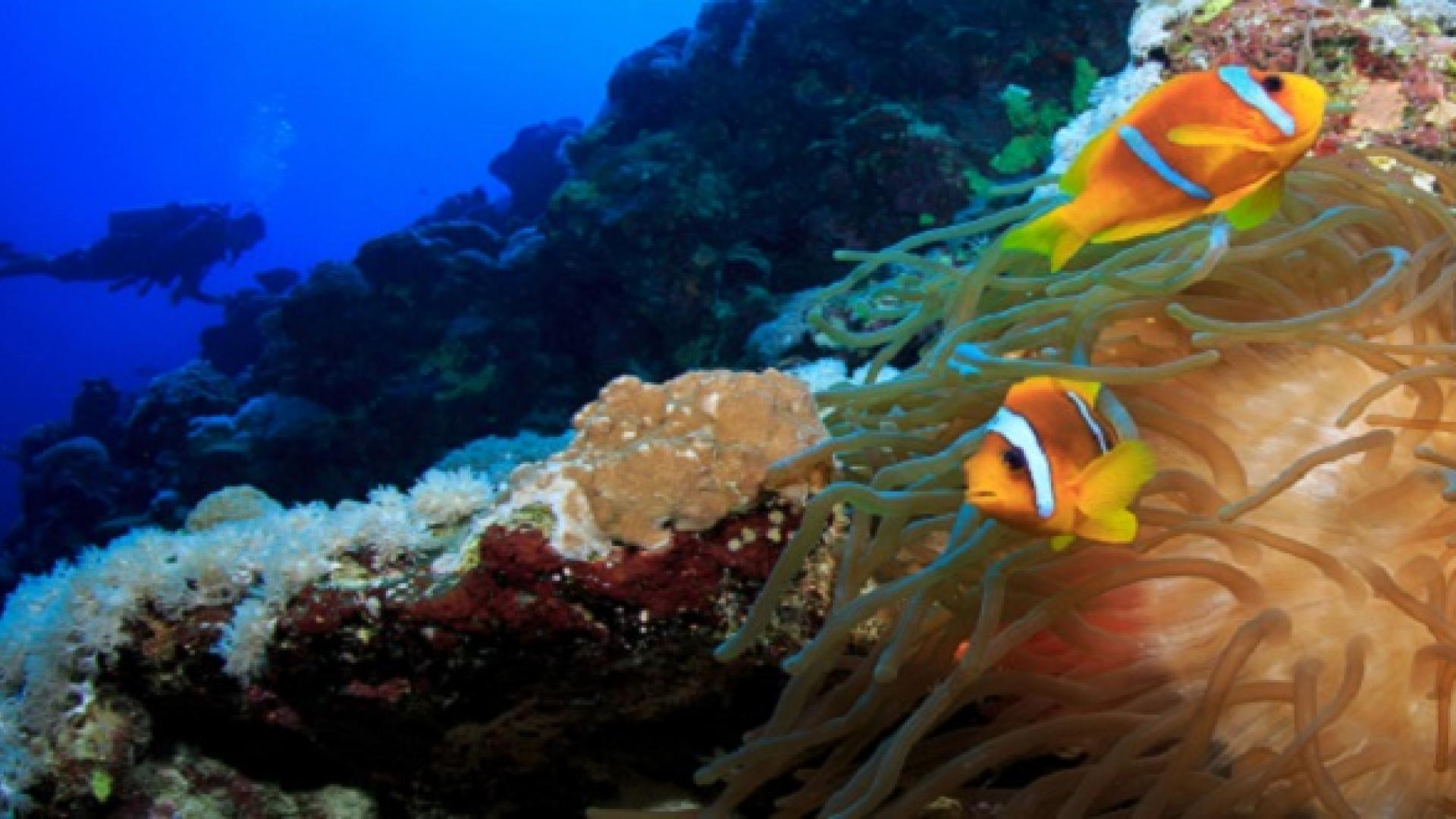© 2015 KAUST
Anemonefish on a secluded coral reef in the Red Sea challenge current thinking on patterns of juvenile fish recruitment say researchers from KAUST. Their findings have significant implications for the management of reefs and marine reserves.
Understanding how fish larvae disperse, and whether juvenile fish return to settle on the reef where they were born, is crucial for the optimum design of marine reserves. Research from coral reefs around the world suggests that most fish tend to settle locally. Now the novel study undertaken by Michael Berumen and co-workers at KAUST’s Red Sea Research Center and the Biological and Environmental Science and Engineering Division suggests otherwise.
The team combined two powerful techniques — genetic parentage analysis and biophysical modeling for larvae dispersal predictions — to examine population dynamics of the anemonefish Amphiprion bicinctus at the Qita al Girsh reef.
“We were interested in levels of ‘self-recruitment’ and ‘local retention’,” states Berumen. “Self-recruitment is the fraction of new fish arriving at a given site that originally came from parents on that site. This requires intensive sampling but is relatively easy to measure.”
Local retention is the fraction of a site’s total output which returns to the same site, explains Berumen. “This is far more difficult to measure empirically. Total output involves millions of offspring, and to measure local retention accurately one would need to know the fate of every larva.”
Read the full article

